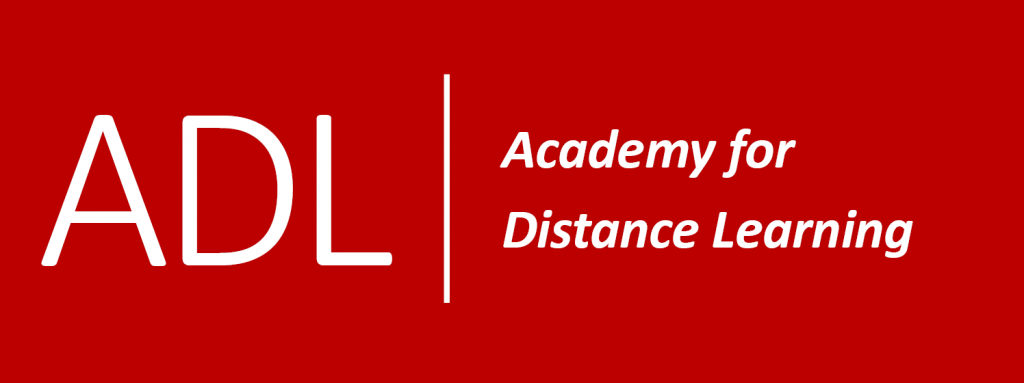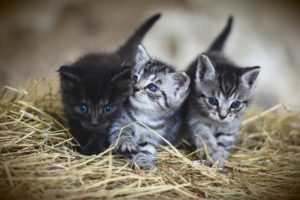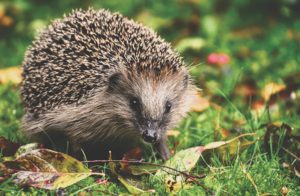Behaviour is any externally observable activity of an animal. It is generally more useful to study animals in their natural habitat as we get a more “natural” view of their behaviour. But of course, this is not always possible. In general, animal behaviour includes:
• Movement of parts of the body
• Stopping expected movement
• Secretions from the body
• Changes in body colour.
MOVEMENTS AND PARTS OF THE BODY
There are some obvious examples here. A dog wagging his tail means he is happy – doesn’t it? Well not always. If a dog is holding his tail high and flagging it backwards and forwards, it can actually mean he is very aware and not actually happy at all. A cat wagging his tail means he is angry. A human smiling (hopefully) means they are happy. A chimpanzee smiling means he is angry. All those adverts you see with chimpanzees showing all their teeth actually means they are distressed. If a human were to smile at a chimp and showing our top and bottom sets of teeth, this would be seen by the chimp as us using a “fear grimace.” Whereas when they cover their top set of teeth and show only the bottom set and do an almost pretend bow, it can mean that they are being playful.
Already you can see how different behaviours mean different things to different species. Other examples:
• Dogs don’t tend to look each other in the eye as this is seen as threatening. Using eye contact with a dog can be a way of establishing your leadership, but with a strange dog, eye contact is not recommended. If they are behaving aggressively, it is best to stare at their mouth or ears rather than their mouth. The dog will know where you are looking as they are excellent judges of body language.
• Dogs that are anxious or anticipating something can yawn more than normal. An anxious dog will yawn frequently, for example, if waiting to see the vet. Or they may yawn loudly when they are about to go for a walk, as a means of controlling their excitement.
• Humans and cats yawn to release carbon dioxide and get more oxygen to their brains. It is a natural reaction. However, some animal behaviourists think cats also yawn as a way to communicate. Cats might yawn to stop themselves from falling asleep or simply because they are bored.
• For most humans, when we sleep, our brain paralyses our body, so we do not act out our dreams. The same applies to cats, to prevent them from falling and injuring themselves as they sleep. When we are relaxed our blood pressure drops and researchers believe that cats stretch to increase their blood pressure again after a period of sleep or relaxation.
When looking at the movement of animals, we should be careful not to make assumptions. Think about the human and the chimpanzee smile, they may look similar, but they don’t mean the same at all. A yawning cat and an exaggerated yawn in a dog mean different things.
Stopping Expected Movement
If an animal unexpectedly changes what they are doing, this could indicate a change in their mood. For example, a dog running towards you wagging its tail who suddenly stops and picks up his ears, could mean he has heard something. Animals will suddenly go still and silent if they detect a threat or something in their environment they weren’t expecting. If an animal does go still like this, it is not advisable to go close to them, in case they are anxious or preparing to attack something, as you could get in the way.
Secretions from the Body
Animals rely more heavily on scents than humans.
• Cats will rub their cheeks against prominent things they consider part of their territory. This is thought to be a way the cat marks its territory as “safe”. This deposits a pheromone product by glands in their cheeks. It is called the contentment pheromone. Cats will also rub against humans in this way to indicate they are “safe” and in the cat’s territory.
• Other animals use secretions to mark their territory. Civets release a secretion from their anal gland to mark their territory. Male musk deer also mark their territory with glandular secretions.
• Prosimians and New World Monkeys will use urine washing as a form of communication. This means anointing themselves in urine. Male New World Monkeys will wash in urine as a way to attract a mate.
• Dominant white rhinos will mark their territory with faeces and urine. They will kick their faeces, so as they walk away, they are trailing their scent with them and marking their territory.
Changes in Body Colour
When we think of animals changing colour, you most probably thought about the chameleon, but other animals also change colour.
• The Arctic Fox will change colour depending on the season. It will have a dark coat in the spring and summer to match the colour of the dirt around it. In the autumn and winter, its coat is white to blend in with the snow.
• Hair, nails, feather and fur are actually dead tissue. We cannot do anything to alter their composition as they are dead. So to change colour, a mammal or bird has to produce a whole new set of fur or feathers. But many amphibians, fish and mammals can change their colour by biochromes in living cells. Biochromes can be in the cells at the surface of the skin or in cells at deeper levels – these cells are called chromatophores. Cuttlefish can manipulate their chromatophores to change their skin colour. These have a number of chromatophores, which each contain a single pigment. Muscle will surround the chromatophore. When the cuttlefish constricts the muscle, the pigment is squeezed, so the animal changes colour. Cuttlefish can blend into their surroundings or use colour to communicate with each other.
• Chameleons can change their colour, but do not tend to change colour to fit in with their environment, but because of changes in their mood.
WHAT IS THE PURPOSE OF ANIMAL BEHAVIOUR?
It is assumed that all animal behaviour is an adaptation designed to support survival, either directly or indirectly. However, this is not always the case. Animals can behave self-destructively, out of habit, or out of boredom, just as humans can.
Think about sleep. Theories on the evolution of sleep suggest that animals (and humans) will sleep for a number of reasons:
• To conserve energy.
• Some theorists argue that animals and humans have evolved to sleep at times when being wakeful would be most dangerous. So if we were an animal in a forest whose natural predator was nocturnal, we might find that it better to sleep at night, so we are moving around less.
• To remain still as protection from predators – animals that have few natural predators, such as lions or bears, tend to sleep 12 – 15 hours a day. Whilst animals with a lot of natural predators will tend to sleep 4 – 5 hours a day.
• As a way to organise our cognitive functioning.
• To rest.
These may be the reasons that humans and animals sleep, but things don’t always go this way. Some humans may struggle to sleep suffering from insomnia. Animals can also have difficulties. For example, a dog might bark and fuss all night but then sleep all day.
To better understand the behaviour, we should also consider what motivates it.
WHAT MOTIVATES BEHAVIOUR?
The nature versus nurture debate is an ongoing debate in human psychology. Both nature and nurture are influential in animal behaviour also.
Nature refers to an individual’s genes. Genetics is of prime importance. Genetics relates to our inherited characteristics, what is passed on through the genes of our ancestors. Genetic characteristics are also sometimes referred to as “inborn”, “innate” or “instinctive”. Most animals are genetically programmed to act in certain ways in certain situations.
Nurture refers to the person’s environment, their experiences, their learning and so on. Experience may encompass terms including: “acquired”, “experiential” or “environmental”. Behaviours can be learned through the experience of interacting with the environment (which includes the people or other creatures in it), or it can be learned through personal, subjective experience (perceptions, thoughts and feelings). In the case of animals, these latter factors are usually difficult to identify.
Since genetic and environmental factors both influence behaviour, it is impossible to distinguish particular causes for a displayed behaviour. Particularly in regard to animals, no behaviour can ever be characterised as totally instinctive or totally learned. Even though learned and genetic factors both play a role in all behaviours, the relative significance of each is variable.
For example, a dog may be anxious due to their genetic makeup. Or they may be anxious due to their environment. Or it could be a mixture of both, nature and nurture.
Some behaviours in animals can be relatively unlearned and therefore, almost impossible to modify. In such cases, we can determine that genetics is the major influence. Other behaviours are relatively easy to modify, thus mostly learned. In such cases, we can determine that genetics has a minor influence.
TYPES OF BEHAVIOUR
Let us look at the two most extreme forms of behaviours.
Innate/Instinctive Behaviour
Innate behaviours can otherwise be known as instinctive or reflex behaviour, and these include stereotypic behaviour which is largely automatic. These types of behaviours are like blueprints, which have been fully established in the animal well before it is born. Basic animal tropisms (automatic orientation responses) such as balancing and positioning are innate behaviours. Some further examples of innate behaviours are breathing, avoiding heat or web making in spider species or cocoon preparation in metamorphosis.
Learned Behaviours
Cognitive behaviours are the most advanced forms of learned behaviour. They refer to the mental activities of animals. In humans, cognition refers to how humans think and the same applies to the mental processes of animals. Genetics provides only a very general influence, and the actual behaviour is more influenced by the environment and experience. Cognitive behaviour is, more or less “deliberate” activity. The animal doesn’t just respond to stimuli; it can also “invent” its own actions.
Simple cognitive behaviours are encountered in many, but not all, arthropods and all vertebrates.
Exploration is a simple cognitive behaviour that allows an animal to familiarize itself with new conditions in the environment. Objects are approached, inspected and then moved away from. This action is generally repeated, but with reduced frequency. The most complex environmental factors tend to stimulate the greatest exploratory activity. If mammals are prevented from exploration for long periods, their behaviour can become abnormal.
Play is a more advanced type of cognitive behaviour which occurs to some degree in most vertebrates, but more so in mammals. Play may involve more complex and diverse activity than exploration. Play and exploration together help animals adapt to both their physical and social environment. Lack of play in young animals can lead to social problems later in life (i.e. they make poor parents or don’t react well with other animals). Another more complex cognitive behaviour seen in mammals is manipulative behaviour.
Behaviour is Complex (Learned and Innate)
Animal behaviour is much more complex than these two extremes; learned and innate behaviour. Much behaviour is developed from inherited potentials but will take a degree of learning to take place. The animal is born with a tendency to act a certain way, but a degree of learning must occur for that behaviour to develop. The process is a little like a computer that delivers pre-programmed responses on demand; the way to act might be built into the animal’s genetic make-up, but it requires a certain stimulus before the action happens. These behaviours in part occur through parental training (e.g. flying, walking, grooming). For example hatchlings, baby sea turtles once hatched, will instinctively know to head in the direction of the sea however, it takes a certain amount of learning to achieve this. They must learn quickly to use their locomotion to get to their destination.
If you’ve enjoyed learning about animal psychology, then why not try out our course in Animal Behaviour!







